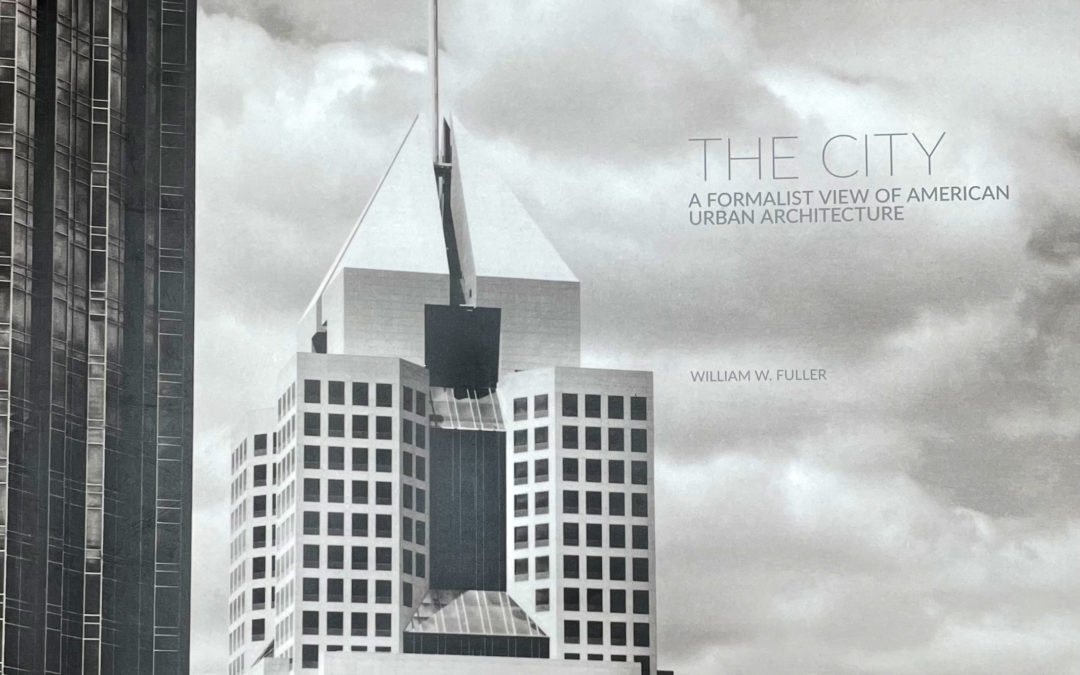Feature Image: Cover of The City, A Formalist View of American Urban Architecture by William W. Fuller
AZPA: When did you first get the idea or desire to publish a book of your work?
WWF: Since I was a kid, I have collected books. Reading has always been an occupation for me. The only way I successfully finished college was by being an English major. Since books have always been an important part of my life, the idea of having a book of my own works was a dream come true..
AZPA: With several portfolios from which to choose, why did you want to publish a book using these particular images?
WWF: On the advice of two people directly connected to this book: Becky Senf, Chief Curator at the Center for Creative Photography in Tucson and Jim Ballinger, Director of the Phoenix Art Museum, now retired, the city work I have been doing for the last 40 years seemed the most original of my series. They also said if they were involved, I would need a designer and Jim recommended Peter Shikani as he did much of the work for the Phoenix Art Museum to their satisfaction.

Chicago, Illinois 1987 © William W. Fuller
AZPA: Did you self-publish or go through a publisher? How did you make that decision?
WWF: I self-published as finding a traditional publisher seemed far-fetched.
AZPA: How long did the whole process take from concept to finished book?
WWF: I don’t remember how long it took, but with the Kickstarter campaign and going through the designing, printing and binding it was many months.
AZPA: Who helped you with this book?
WWF: Peter Shikani and Brad Jones at PS Studio did the production work. The introduction by Jim Ballinger and the extensive essay by Becky Senf were awesome. I owe them much.

Atlanta. Georgia 2007 © William W. Fuller
AZPA: How did you decide which photos to use in the book? And their sequencing?
WWF: The sequencing and picking the images was totally my decision. I lived with the work and studied it for years. There was no hesitation on my part.
AZPA: Did you know what kind of paper and binding you wanted to use?
WWF: The paper, binding shape and size were a collaboration with the designers.
AZPA: How was the publishing process for you as a photographer? The best part? The worst part?
WWF: The best part of the process was seeing the finished book. There is nothing like it. I guess the worst part was paying the bills. I did have considerable help through the Kickstarter campaign, but more than half the costs rested on me. The actual cost was over $30,000 for 500 books. Kickstarter raised almost $12,000.
AZPA: Would you change anything about the book?
WWF: I would have liked to be more involved with the printing process. There were printing issues I was not happy with, but work took me out of state during much of the printing. Had I been able to be there I would have found the problems. The artist is often present during the printing process.
AZPA: What was your biggest lesson learned?
WWF: Promotion was my biggest need. I still have many of the books. Although there is always the hope that one day I will be discovered, and the books will have maybe even more value.
AZPA: Where can our blog readers purchase the book?
WWF: Books are available through me and my website williamwfuller.com.

